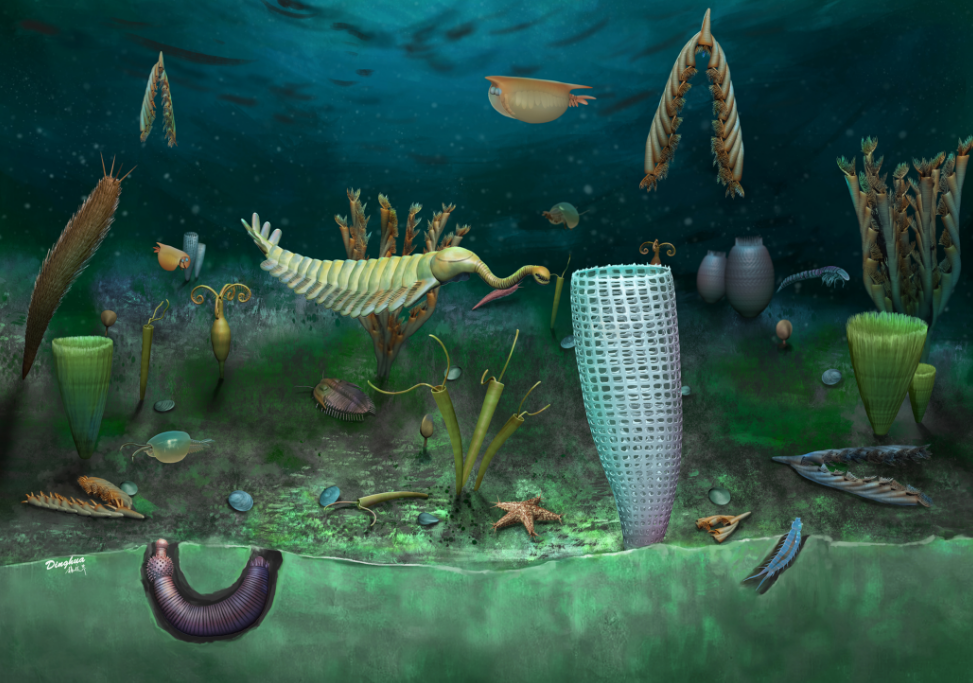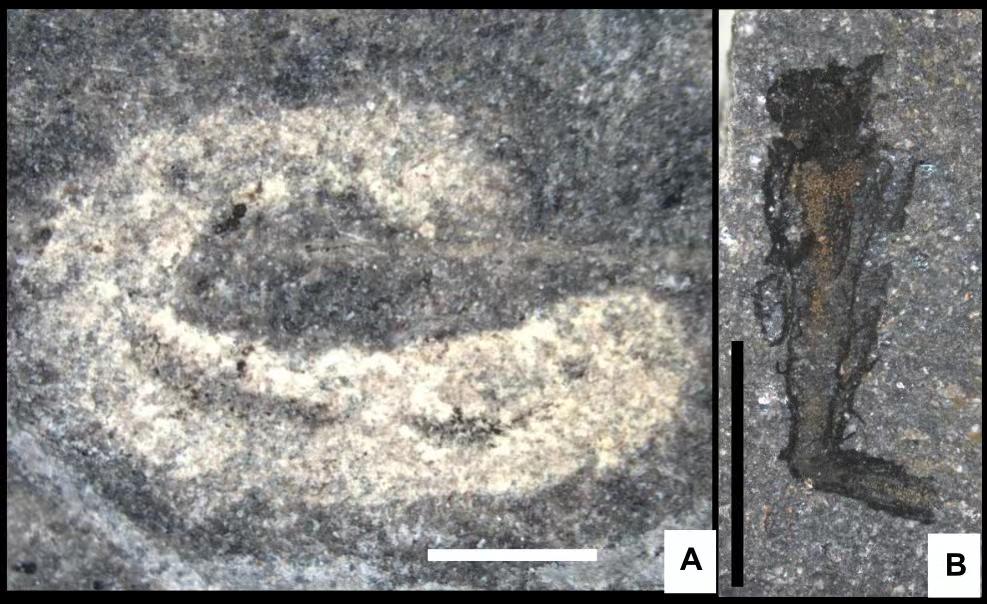
An unusually well-preserved "Marine Dwarf World" from 462 million years ago was found at Castle Bank, Wales by a team led by the Nanjing Institute of Geology and Palaeontology of the Chinese Academy of Sciences (NIGPAS). The site comprises over 150 species, with many of miniaturized body size. It is one of the world's most unexpected fossil sites.
The study was published in Nature Ecology & Evolution on May 1.
Castle Bank, in Powys, is one of the very rare sites where soft tissue and complete organisms are preserved, providing an unrivaled view of the evolution of life. Among the best of these sites are Burgess Shale-type faunas, named after the classic Burgess Shale fossil-bearing deposit in Canada.
Many of these sites occur in rocks from the Cambrian period (542–485 million years ago), when recognizable animal fossils first appeared. However, almost none occur in post-Cambrian rocks. As a result, paleontologists know a lot about Cambrian marine life, but less about how it evolved in the periods immediately afterwards.
Castle Bank is from the middle of the succeeding Ordovician Period, some 462 million years ago, and rivals the best of the Cambrian deposits in diversity of fossils and extraordinary levels of preservation.
The remarkable new assemblage was discovered in 2020 by Dr. Joe Botting and Dr. Lucy Muir, two authors of this study, near Llandrindod, central Wales.
So far, well over 150 species have been recovered, almost all of them new. Many of the animals are very small, at only 1–3 mm long, but they preserve minute details. They range from arthropods like crustaceans and horseshoe crabs to various types of worms, sponges, starfish, and many, many more. In some animals, internal organs such as digestive systems and even nerves are preserved, together with the limbs of tiny arthropods and delicate filter-feeding tentacles. Such exquisite detail is known from the best Cambrian faunas, but not previously from the Ordovician.
The Castle Bank fauna represents a community of diverse marine organisms from the Middle Ordovician, and many of the shelly fossils were normal for these rocks.
In addition, the range of fossils also includes several unusual discoveries, from unexpectedly late examples of Cambrian animals looking like opabiniids (weird proto-arthropods with a long proboscis) and wiwaxiids (slug-like molluscs armored with scales), to tantalizing, unexpectedly early fossils that resemble modern goose barnacles, cephalocarid shrimps (which have no fossil record at all) and possibly even a marine relative of insects.
The Cambrian witnessed the origin of the major animal groups. The Ordovician was a critical time in the history of life as well, with an extraordinary diversification of animals that produced hard skeletons and abundant fossils. In addition, more familiar ecosystems like today's coral reefs appeared by the end of the Ordovician. Until now, however, a big "gap" has existed between these two evolutionary events.
A new Burgess Shale-type fauna from the middle of this interval will help close this gap by answering questions about the animal shift from Cambrian fauna to Palaeozoic fauna and about the shift in ecosystems from the Cambrian style (which were similar across much of the world) to the much more diversified ecology we see today.
A few papers describing sponges and one on a primitive relative of modern arthropods called Mieridduryn have been published based on this fauna. Many more papers will follow and collections are ongoing. According to Dr. Muir, "Most fossil deposits of this importance are studied for many decades, and this is likely to be no different!"
Joseph Botting and two collaborators from NIGPAS (Y. D. Zhang, and J. Y. Ma) have been collaborating on the Konservat-Lagerst?tte of Ordovician, and parts of this work, including the observation and analysis of some specimen and reconstruction, are completed in NIGPAS under the support of CAS.
The Castle Bank fauna has important implications for the evolution of sponges, especially Hexactinellida, and is considered as transitional interval between sponges of Cambrian and those of Anji fauna, another Burgess-Shale type fauna from Zhejiang, China, which the researchers have been devoting themselves to for years.

Fig. 1 Reconstruction of the Castle Bank community. (Image by YANG Dinghua)

Fig. 2 Two animals with soft bodies from the Castle Bank fauna. (A) probable priapulid (NIGP175887); (B) tubicolous problematic organism (NIGP175892). (Image by NIGPAS)

86-10-68597521 (day)
86-10-68597289 (night)

52 Sanlihe Rd., Xicheng District,
Beijing, China (100864)

